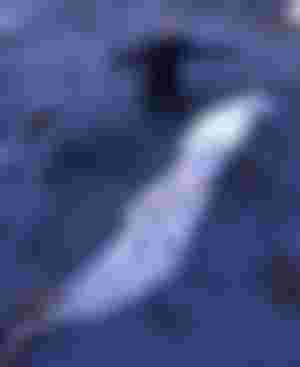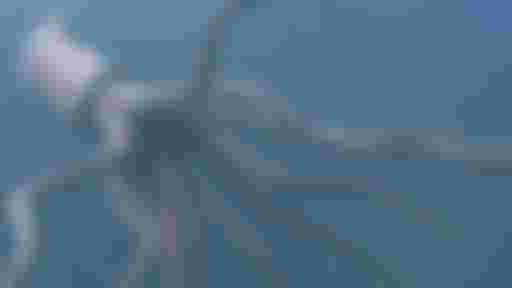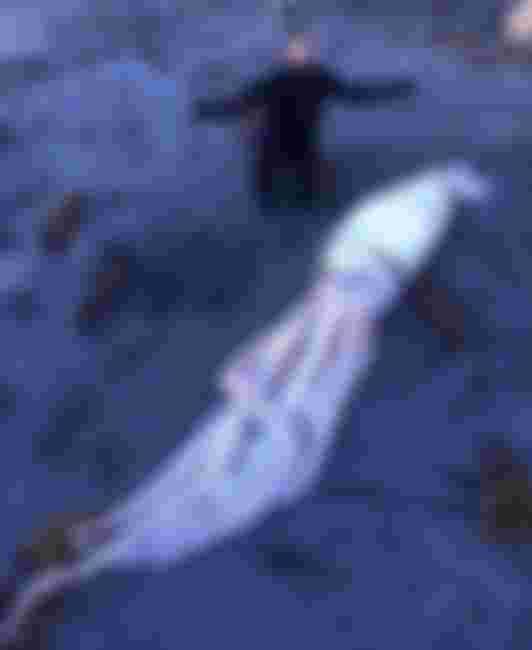Although smaller squids can be found in each ocean, with over 300 different types, the giant species live at depths of 1,500 to 3,000 feet. No wonder it is rarely seen by humans! Although ancient records speak of observations of sailors and even the capture of these sea giants, scientists have generally dismissed these incidents until about a century ago. The skepticism was partly caused by fantastic stories.
Scientists first observed Archy, the squid, as it might be called, in 1870. For some unknown reason, probably due to changes in the ocean, many have emerged off the coast of Canada. They were seen and some were captured. Then, in November 1873, just a month after one of the three Newfoundland fishermen nearly drowned, a giant squid was caught and carefully examined. It turned out to be a thirty-two foot specimen!
Giant arms with rotating suction cups

Because of its long serpentine arms, many consider the giant squid to be a kind of octopus. But it's not like that. There are many differences: the octopus has a large, round body, with eight tentacles. The largest can weigh fifteen pounds and has an extended arm about three meters.
Now imagine the giant squid. It is ten times larger than the largest octopus. Its cylindrical body is about fifteen feet long, with not only eight, but ten of the most fantastic arms imaginable. Eight of these arms can reach up to twelve feet. It also has two studded tentacles that measure forty to fifty feet!
The arms also have rows of raised suction cup discs on short flexible rods that allow the suction cups to rotate in all directions. And, depending on the species, these shoots can have sharp teeth on the edges or claws which can be coated or spread at will. It is normal to eat and maintain a potential meal with slippery skin!
Jet speed counter
While the octopus crawls across the bottom of the ocean and lives in crevices, Archy, Lula, finds himself swimming in the open sea. Using two fins on the sides of your body, you can navigate in complete security. But when you want to get there quickly, you go by plane! In some species, this jet thrust is enough to throw it out of the water and thirty meters in the air. How is it possible?
The cover keeps the secret. The coat is composed of thick skin and muscles which not only protect the vital organs of the squid, but also give it a force of spray. When the mantle muscles relax, the water enters a loose edge around the neck and fills the large internal cavities. Then, when the mantle contracts, the opening is sealed and the water is expelled under high pressure through a funnel-shaped passage under the head. By changing the direction of this "beak", the squid can reach an instant instant reverse, move forward or backward without turning.
If you're scared, the extraordinarily large nerves of the squid release a spontaneous generation of energy that takes you to top speed in a matter of moments. These nerve fibers, a hundred times larger than those of man, are so sensitive that, when the squid is threatened, a nervous impulse flashes simultaneously in all parts of the mantle. Reacting with enormous force, the muscles contract to create a powerful boost.
Jet-powered Speedster
While the octopus crawls to the ocean floor and lives in the cracks, Archy the Squid finds himself swimming in the open sea. By using two fins on the sides of the body, you can surf silently. But when you want to go to crowded places, get on a plane! In some species, this jet thrust is sufficient to throw it out of the water and thirty meters high into the air. How is it possible?
The coat keeps the secret. The coat is made up of thick skin and muscles, which not only protect the vital organs of the squid, but also push it with the power of the jet. When the mantle muscles relax, water enters through a loose edge around the neck and fills the large cavities inside. Then, when the mantle contracts, the opening is sealed and the water is expelled at high pressure through a funnel-shaped passage under the head. By changing the direction of this "beak", the squid can get an instant reverse thrust, go forward or backward without turning.
If frightened, the squid's extraordinarily large nerves release a spontaneous generation of power that sometimes drives it at full speed. These nerve fibers, which are a hundred times larger than man's, are so sensitive that when the squid is threatened, a nerve impulse flashes simultaneously in all parts of the mantle. By reacting with enormous force, the muscles contract to create a powerful jet thrust.
Another unusual team
The squid is literally blue blood from the marine world. His blood is bluish in color due to a copper compound. When the oxygen runs out, it circulates through the gills through two hearts, pumping it to one gill each. Then a systemic heart is used to pump fresh blood through the tissues. So the squid has three hearts! The organs of this live turbojet engine testify to the work of its creator.
Archy and his partner come with an ink bag. This releases large quantities of black camouflage liquid, pulling on a drop of squid to confuse the pursuers. An underwater "smoke screen"!
The small colored cells that allow you to change color also help the squid to escape the attackers. These cells are so efficient that they can match the background color by passing a wave of color through the squid's body while swimming from one floor to another.
The giants, in fact, are the eyes of this incredible sea monster. They can grow up to fifteen inches in diameter, which is as large as a few beach balls. Mr. Lula's eyes are surprisingly similar to the human eye. Both have eyelids, transparent corneas, internal and external chambers, retinas, lenses, stem cells, which provide black and white images and cone cells to record impressions of color. The structural similarity is so striking that respected biologist Dr. NJ Berrill said, "I think if you were to ask a zoologist to select the most striking feature of the entire animal kingdom, you are likely to say: not the human eye, which in any case The case is an incredible organ beyond imagination, nor the octopus eye, but the fact that these two eyes, man and squid, are similar in almost every detail. "The 100,000 receivers per square millimeter in the squid's eye allow you to see even the smallest details.
A question of size
Many wonder how these giant squid really grow. The largest examined was found in Lyall Bay, New Zealand, and was about fifteen meters long. But only twelve different species of these giants have been classified and it is possible that other larger species exist. Indeed, there is some evidence to suggest this.


For example, sperm whales live almost exclusively in squid, from the smallest species to the giants. Many of these huge fifty-ton whales have undergone profound cuts during encounters with giant squid. Often, his skin is filled with circular scars that are two and a half to four inches in diameter. Apparently, they were inflicted by squid tentacle suckers during wild submarine battles, as these scars are about the size of squid suckers of fifty feet.
But if the size of the piglet is proportional to the size of the squid, the oceans could contain really huge giants. Because? Because some of these scars are six inches in diameter! In comparison, an eighteen-inch sucker squid would be about two hundred feet.



I am always fascinated by this kind of stuffs in the animal kingdom. I've watched several documentaries about this creatures and I can say you've written precise facts or have written it better than any of the published articles I've read about squids before haha.
This kinds of facts make me appreciate the vast ocean more but makes me wanna swim less in it 😂